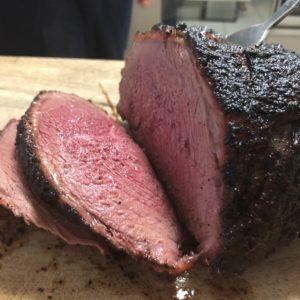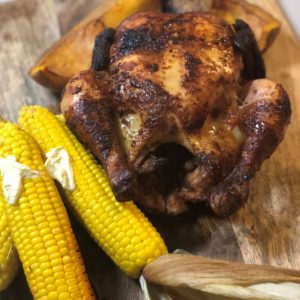A Guide to Barbecue: Understanding the Techniques, History, and Flavor of BBQ
Barbecue, also known as BBQ, is a beloved tradition that has been passed down from generation to generation. It is a method of cooking that involves low and slow heat, often with wood smoke, to create a unique flavor and tenderness in meats, poultry, and fish.
The history of barbecue can be traced back to the indigenous peoples of the Americas, who used smoke to preserve meats before the invention of refrigeration. As European settlers arrived, they brought their own techniques and flavors, resulting in the diverse styles of barbecue that we know today.
One of the most popular styles of barbecue is Southern or traditional barbecue, which is characterized by the use of pork, particularly pork ribs and pork shoulder, as well as a variety of sauces and rubs. In Texas, beef brisket is also a staple of barbecue, and is often cooked for hours to achieve a tender and flavorful result. Other popular styles include Kansas City, which is known for its sweet and tangy sauces, and Carolina, which is known for its vinegar-based sauces.
The key to great barbecue is the use of a combination of dry rubs, marinades, and sauces to infuse flavor into the meat. Dry rubs, which are made up of a blend of spices and herbs, are applied to the meat before cooking to create a flavorful crust. Marinades, which are made up of a combination of liquids such as vinegar, oil, and spices, are used to add flavor and moisture to the meat. Sauces, which are typically added after cooking, can be used to add a final layer of flavor and to create a beautiful glaze on the meat.
When it comes to cooking barbecue, the two most popular methods are indirect grilling and smoking. Indirect grilling involves cooking the meat over a heat source that is not directly under the meat, allowing for a slow and steady cook that results in a tender and juicy final product. Smoking, on the other hand, involves cooking the meat over wood smoke, which imparts a unique flavor and aroma.
One of the most important things to consider when cooking barbecue is temperature control. The ideal temperature for barbecue is around 225-250 degrees Fahrenheit, which allows for a slow and steady cook that results in a tender and juicy final product. A meat thermometer is a must-have tool for any barbecue enthusiast, as it allows for precise temperature control and ensures that the meat is cooked to perfection.
Another important aspect of barbecue is the use of wood smoke. Different types of wood, such as hickory, mesquite, and apple, can be used to impart different flavors to the meat. The type of wood used can also vary depending on the style of barbecue, with hickory and mesquite being popular choices for Southern barbecue, and apple being a popular choice for poultry.
Barbecue is more than just a method of cooking, it’s a lifestyle and a tradition that brings people together. Whether you’re a seasoned pitmaster or a novice, barbecue is a fun and rewarding hobby that can be enjoyed by people of all ages and backgrounds.
In conclusion, barbecue is a beloved tradition that has been passed down from generation to generation. It is a method of cooking that involves low and slow heat, often with wood smoke, to create a unique flavor and tenderness in meats, poultry, and fish. The history of barbecue can be traced back to the indigenous peoples of the Americas, and diverse styles of barbecue that we know today. The key to great barbecue is the use of a combination of dry rubs, marinades, and sauces to infuse flavor into the meat. Cooking barbecue with temperature control and wood smoke is essential for a perfect BBQ.




